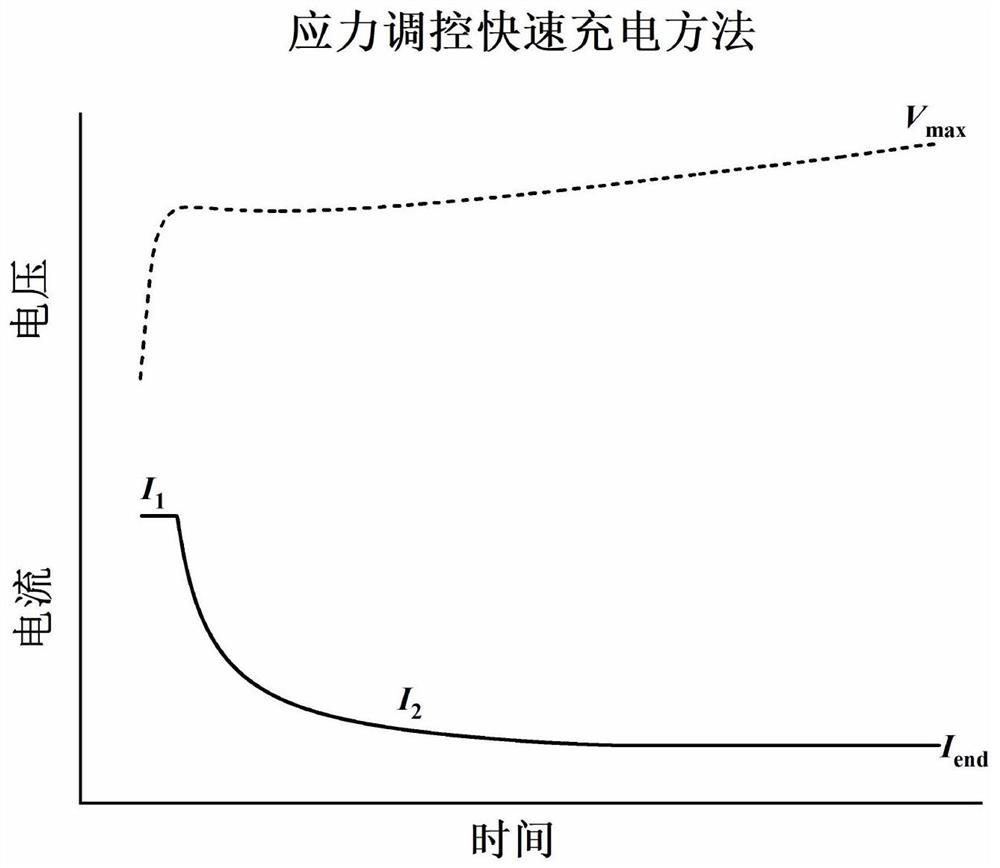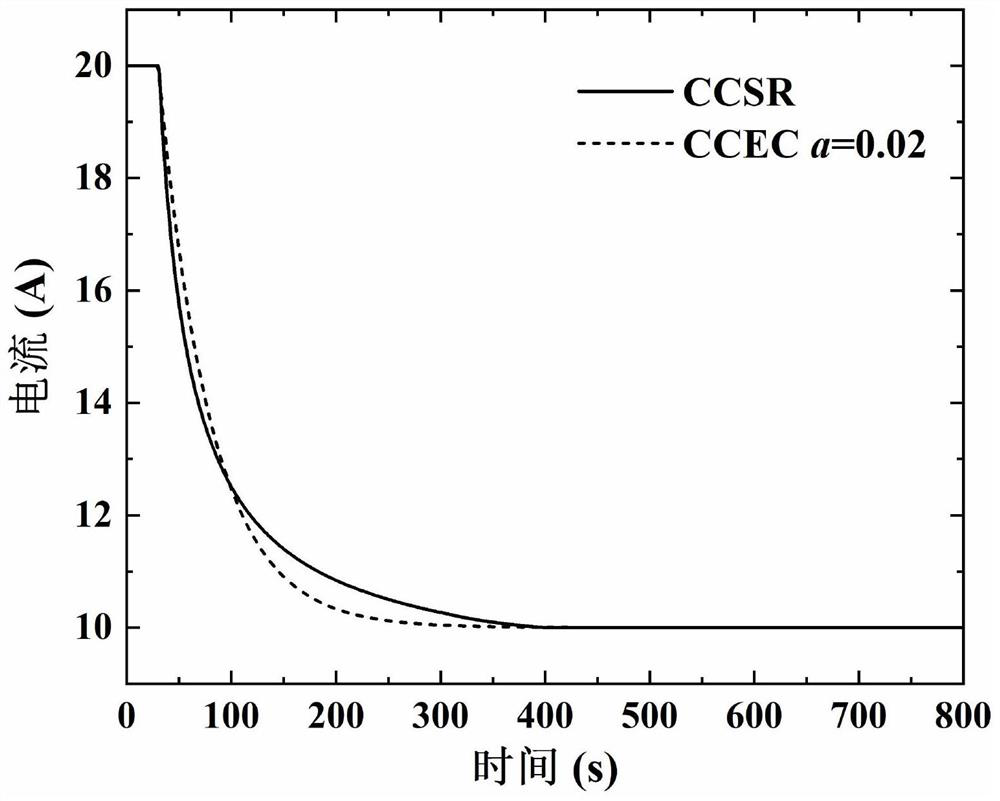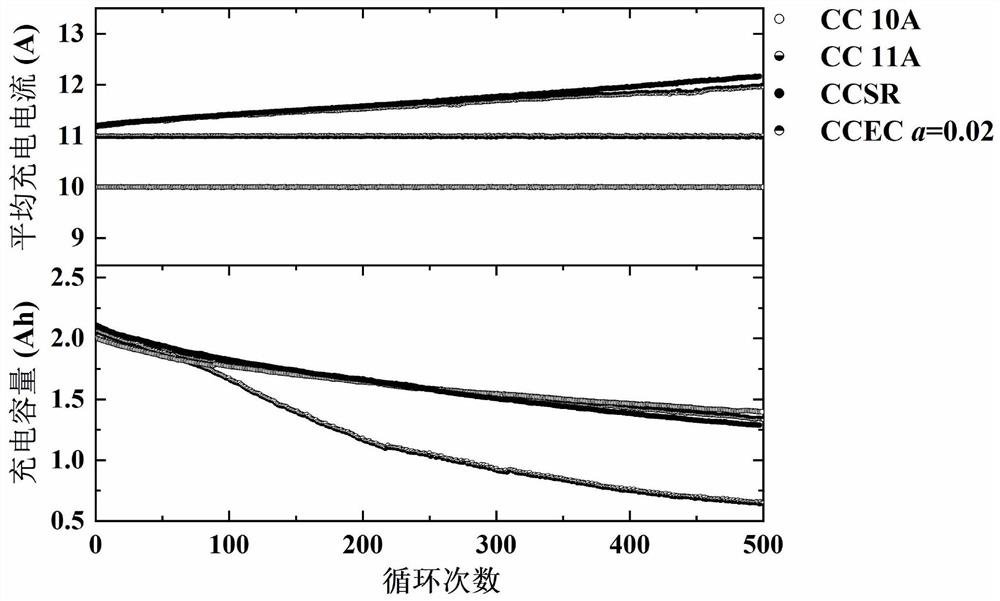Stress-regulated rapid charging method for long-life lithium ion battery
A lithium-ion battery, fast charging technology, applied in the direction of secondary battery charging/discharging, secondary battery, secondary battery repair/maintenance, etc., can solve problems such as no solution, low cost, simple and easy method Effect
- Summary
- Abstract
- Description
- Claims
- Application Information
AI Technical Summary
Problems solved by technology
Method used
Image
Examples
Embodiment 1
[0043] In this embodiment, a stress-regulated long-life lithium-ion battery fast charging method divides the charging process into two stages, the first stage is high-current constant current charging, the second stage charging current changes with time, and charging The charging current gradually decreases during the process.
[0044] The method of this embodiment directly optimizes the charging rate of the battery from the perspective of preventing battery cycle performance degradation, and improves the charging rate to the maximum efficiency within a critical range. The charging method in this embodiment does not involve changes in electrode materials, and can be applied to various power batteries.
Embodiment 2
[0046] This embodiment is basically the same as Embodiment 1, especially in that:
[0047] In this embodiment, the high current in the first stage is the safe upper limit of the current used by the battery and the charging device.
[0048]In this embodiment, the time-varying charging current in the second stage is designed according to the theoretical model of the diffusion-induced stress of the electrode active particles. In the theoretical model, the maximum tensile stress on the surface of the electrode active particles quickly reaches a critical value in the first stage of charging And stay at this value during the second stage of charging. critical value It is set according to different battery charge and discharge data and optimization requirements. The variable current curve in the second stage of charging can be approximately fitted as an exponential curve. The expression of charging current exponential curve is I 2 =(I 1 -I end )×exp[-a(t-t 1 )]+I end , whe...
Embodiment 3
[0052] This embodiment is basically the same as the above-mentioned embodiment, and the special features are:
[0053] In this embodiment, a stress-regulated fast charging method that takes both capacity utilization and cycle stability into account, the charging current can be set by equation (5). In addition, a fine-tuning constant-current exponential current charging scheme that is easier to set the charging current is proposed, and the charging current can be set by equation (6). The parameters in the equation are all set according to the specific application of the lithium battery.
PUM
 Login to View More
Login to View More Abstract
Description
Claims
Application Information
 Login to View More
Login to View More - R&D
- Intellectual Property
- Life Sciences
- Materials
- Tech Scout
- Unparalleled Data Quality
- Higher Quality Content
- 60% Fewer Hallucinations
Browse by: Latest US Patents, China's latest patents, Technical Efficacy Thesaurus, Application Domain, Technology Topic, Popular Technical Reports.
© 2025 PatSnap. All rights reserved.Legal|Privacy policy|Modern Slavery Act Transparency Statement|Sitemap|About US| Contact US: help@patsnap.com



